Following each week of the 2021 NFL season, we will come together at the intersection of data and film to review the best and the worst of what happened — from something as small as technique or as big as play design.
With Week 1 in the rearview mirror, these are four things that stood out.
CLICK HERE FOR MORE PFF TOOLS:
Rankings & Projections | WR/CB Matchup Chart | NFL & NCAA Betting Dashboards | NFL Player Props tool | NFL & NCAA Power Rankings
Like: Run Fits in Los Angeles
The Sunday Night Football game was a showcase for an offense with a new triggerman to most observers, and justifiably so. New Los Angeles Rams quarterback Matthew Stafford finished the night with a 156.1 passer rating and 12.3 yards per attempt on his 27 dropbacks. If he is the same player in the winter that he was in the opener, Los Angeles may be at worst the second-best team in its conference.
There was similar intrigue on the other side of the ball, as well, with defensive coordinator Raheem Morris getting his first opportunity to call a game with his starting unit. Fresh off 2020, the Rams and former defensive coordinator Brandon Staley racked up the following accomplishments: the best coverage grade (90.3); the lowest expected points allowed per play (-0.161, a mark that was lower than the worst offense in 2020, the New York Jets); the fewest missed tackles (93); the lowest average depth of target (7.4); and the lowest yards per pass attempt (6.6).
As impressive as the Rams were in covering the pass, it stands to reason due to the structure of Staley’s split safety defense. Where Los Angeles impressed me last season was in how strong it performed against the run in spite of playing in lighter boxes (only the Rams and Vikings had more than 200 snaps defending the run from a split safety shell). The Rams ended 2020 with the third-lowest average depth of tackle (3.64) despite ranking 26th in tackles for loss or no gain. Playing the run without a numbers advantage or blitzing is all about leverage, physicality and technique.
Staley may be wearing different shades of blue and yellow now, but the fundamentals and buy-in from the Rams' players when stopping the run haven’t gone anywhere. You can see it at every level of the defense. Watching this clip in the low red zone, the fundamental soundness in Los Angeles’ interior linemen is apparent.
Watch Sebastian Joseph-Day and A’Shawn Robinson knock back the center and the guard, peeking into the backfield. When they confirm the flow of the running back, you can see them squeeze the A gaps closed and force the running back to bounce, allowing Justin Hollins to squeeze down from the weak side of the run action and make a play. Even Aaron Donald, battling his double team to as close to a stalemate as you’d expect, keeps the back from making any sudden cutbacks.
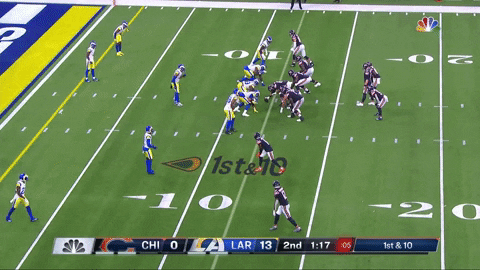
Against perimeter runs like outside zone, these interior linemen do an excellent job of stretching offensive linemen by setting a low pad level, getting good extension in their arms and fighting pressure with pressure. A general rule of thumb is that when linemen try to run you laterally, you push them vertically — even if you don’t get penetration, you can flatten the angle of the block and keep offensive linemen on the first level. That means linebackers get to stay clean and find run-through tackles like the clip below:
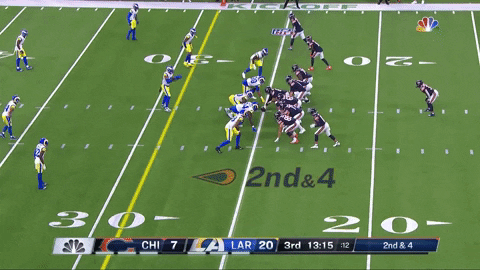
When an offense truly wants to get to the perimeter, it’ll do whatever is necessary to make it happen. In those cases, you have to set a hard edge and force the ball back inside. It's clear how badly the Rams want to stop the run when the best corner on the roster — and maybe in the NFL — is striking players, setting the edge and finishing plays with a tackle. Jalen Ramsey put on a clinic in run defense Sunday night. The following clips are my favorite reps:
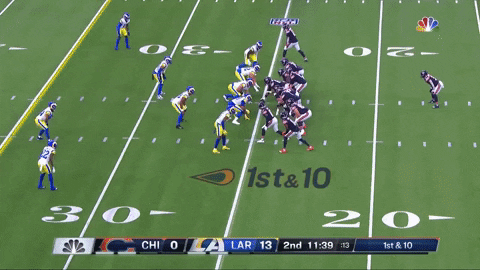
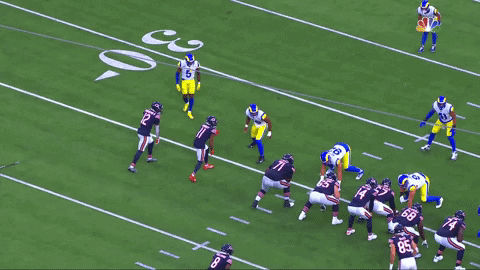
It doesn’t matter who calls the plays: If a defense performs like this against the run, it’ll be more than fine.
| LAR | Runs Defended | Stops | TFL + NG | Average Depth of Tackle |
| Odd Front, Week 1 | 7 | 4 | 2 | 1.43 |
Dislike: Everything about Atlanta’s Defense
Something beyond my feeble understanding of football statistics happened at Mercedes-Benz Stadium: the Philadelphia Eagles‘ passing offense finished the day with three touchdowns, 7.5 yards per pass and a 126.4 passer rating in spite of throwing 60% of their passes short of the sticks and recording an average depth of target less than four yards. In a word: How?
The Falcons put up a putrid effort in covering the pass against an offense and a quarterback that had zero interest in pushing the ball downfield. Over 60% of the passing yardage gained on the day came after the catch thanks to some poor tackling on the perimeter. The Eagles forced six missed tackles on receptions, the sixth-most in Week 1. Jalen Hurts and his receiving corps too often found cheap explosive plays on screens and dump-offs just by running through arm tackles out in space.
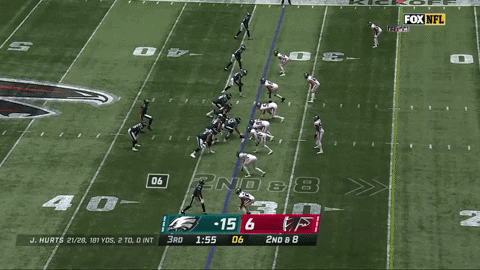
If it wasn’t the bad tackling in coverage, then it was playing extremely soft coverage, trying to play from the top down and forcing the ball to be thrown underneath with a quarterback who prefers it that way anyhow. Hurts targeted a true wide receiver only41% of the time, and it still wasn’t to push the ball down the field — only one of the 16 attempts to a wide receiver traveled 20-plus yards downfield, and the average depth of target was still beneath four yards.
Hurts brought “taking what the defense gives you” to a new high — or low. The run defense wasn’t a ton better, either. Atlanta had the fourth-worst average depth of tackle in Week 1 (5.22 yards), routinely being moved off the ball by Philadelphia’s interior linemen.
There are people who read my work for scheme analysis, but I regret to inform you all that there’s no coverage or front to fix some of these issues. Grab your Peerless Price throwback and something cold to drink. This season is going to be unpleasant.
| Week 1 | Run Defense Grade | Pass Rush Grade | Coverage Grade | EPA/Play Allowed (Rank) | Missed Tackles (Rank) |
| Atlanta Falcons | 61.2 | 51.6 | 52.8 | .190 (27th) | 9 (T-6th Most) |
Dislike: The Steelers’ Retooled(?) Offensive Line
Najee Harris has 8 yards on 7 attempts.
150% (!!!) of his yardage gained has come AFTER contact.
The man is fighting for his life today. #PITvsBUF
— Diante Lee (@PFF_DLee) September 12, 2021
The day will eventually come when the most die-hard Pittsburgh Steelers fan comes to terms with the fact that we’re two exits past the end of the road with Ben Roethlisberger. His inability to threaten a defense downfield is what derailed the team's 2020 season, and it nearly cost Pittsburgh in Week 1 of 2021. The offense put up -0.034 expected points added per pass play and an 83.9 passer rating — the worst of any team that won last week.
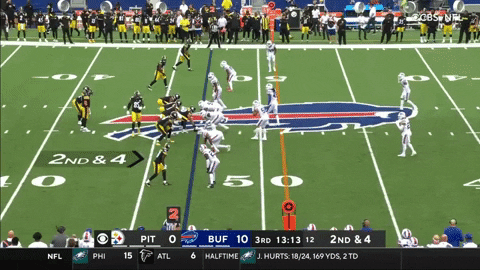
And yet, you can make the argument that Big Ben wasn’t the worst thing to happen on offense against the Buffalo Bills. The offensive line put up one of the worst performances I saw in Sunday’s slate. If you looked only at how the unit protected Roethlisberger, it would appear to be a run-of-the-mill performance after allowing a middle-of-the-road quarterback knockdown rate and the fourth-lowest pressure rate.
That hides the fact the Bears were the only team outside of the Steelers to go without attempting a single pass deeper than 20 yards. Over one-third of Pittsburgh's passes were off play fakes, 62% of the throws were short of the sticks and the offense had the shortest time-to-throw average in the NFL. When it was time to pass, Roethlisberger was playing hot potato.
Where the poor line play reveals itself is in the run game. Najee Harris finished the day with 45 yards on his 16 attempts, and for as rough as his 2.8 yards per carry mark looks on its face, it’s worsened by the fact that 78% of those yards came after contact. Harris was repeatedly running through the arms of Buffalo defenders and up the backs of his own teammates. Not a single Steelers lineman received a positive run-block grade on more than 15% of the team’s attempts.
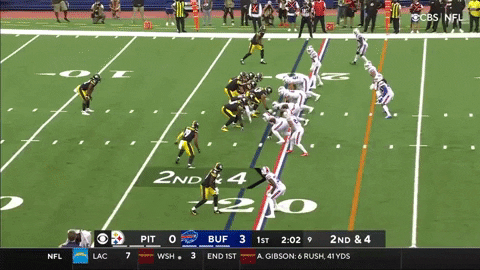
Offensive coordinator Matt Canada’s run game didn’t fail for a lack of effort. Outside zone, inside zone, power and counter were called throughout the game. The longest run of the day came on an end-around, and there were shifts, motions and tight splits — all of the things you see successful rushing offenses incorporate — and none of it loosened up running lanes for Harris.
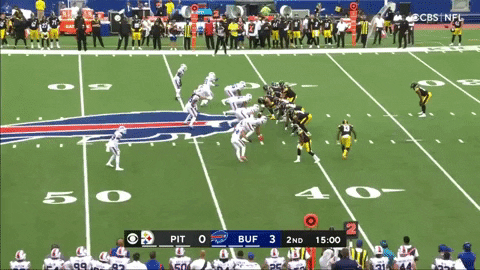
The defense looks ready to contend for a championship, but all of that work will be for naught if the offense it’s tied to doesn't shape up.
Like: Justin Herbert’s Arm Meeting Joe Lombardi’s Offense
| Week 1 | Passing Grade | Dropbacks | Adjusted Completion Rate | Air Yards % (Before the catch) | Yards Per Attempt |
| Justin Herbert | 81.1 | 49 | 80% | 58.8% | 7.2 |
When Joe Lombardi was hired as the offensive coordinator for the Los Angeles Chargers, I will admit to scratching my head some. The offense that Saints offensive coordinator Pete Carmichael put together with Drew Brees depended heavily on Brees’ ability to use his mind as his greatest weapon before the snap. Throws were always on time no matter the coverage or the pressure, and Brees could operate the entire playbook from the line of scrimmage, if need be.
None of that is to say that quarterback Justin Herbert is an incapable player of accomplishing these things, but Brees had a two-decade-long mental Rolodex to comb through to make sure he always had the right answer. After Week 1, two things are clear to me: 1) Regardless of Lombardi and Brandon Staley’s already tight relationship, Staley wanted a thinking intensive offense because it matches who he is as a defensive coach, and 2) Even if Herbert never gets to where Brees is at mentally, if he just crosses a necessary threshold, his arm talent can carry him the rest of the way.
An elite talent at quarterback can make the mundane look like more, such as hitting a hole shot up the sideline against Cover 2…
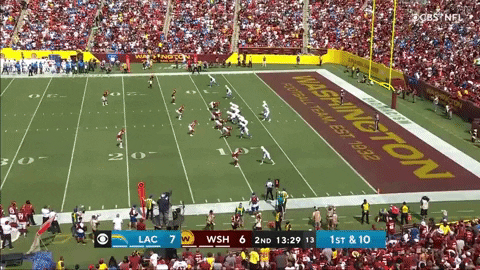
Using his arm to throw his receivers open at the sticks on third down…


Driving the ball in the intermediate game in the middle of the field and along the sidelines…

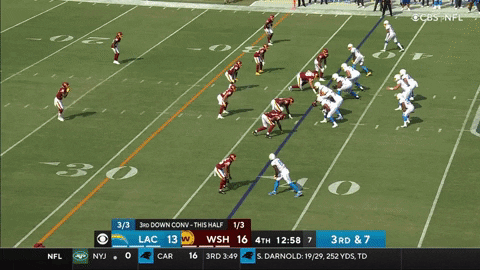
And a beautiful back-shoulder placement on a fade on a key third down…
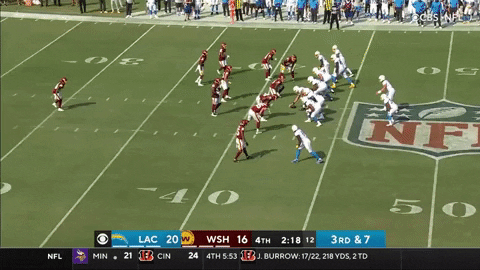
The grade on Herbert’s day is a much closer reflection of his performance than some of the stats would lead you to believe. His 81.1 passing grade checks in at eighth in the NFL and fourth among quarterbacks who took at least 40 dropbacks in Week 1. His 94.6 grade on third down was higher than any other signal-caller's performance in the NFL on any down, and 71% of the yardage came while the ball was in the air. Not only was he winning in high-stakes situations, but he also did most of the work himself.
That’s what was most impressive to me: Without any semblance of a downhill running game to open up the field for him, Herbert stood tall and willed that offense to a win. Los Angeles was the only team last week to run the ball at least 25 times and not cross the 100-yard threshold, and 80% of its yards came after contact. There will be some concerns about sustainability for a young quarterback who has to shoulder the load against teams that know the pass is coming, and he’ll probably see less man coverage on his wideouts over the course of the year than he did against Washington.
For at least a week, though, the Chargers’ best players are healthy, the team won a tough road game and it looks like there’s a real chance the franchise nailed its head coach-quarterback combination.
What could possibly go wrong from here?
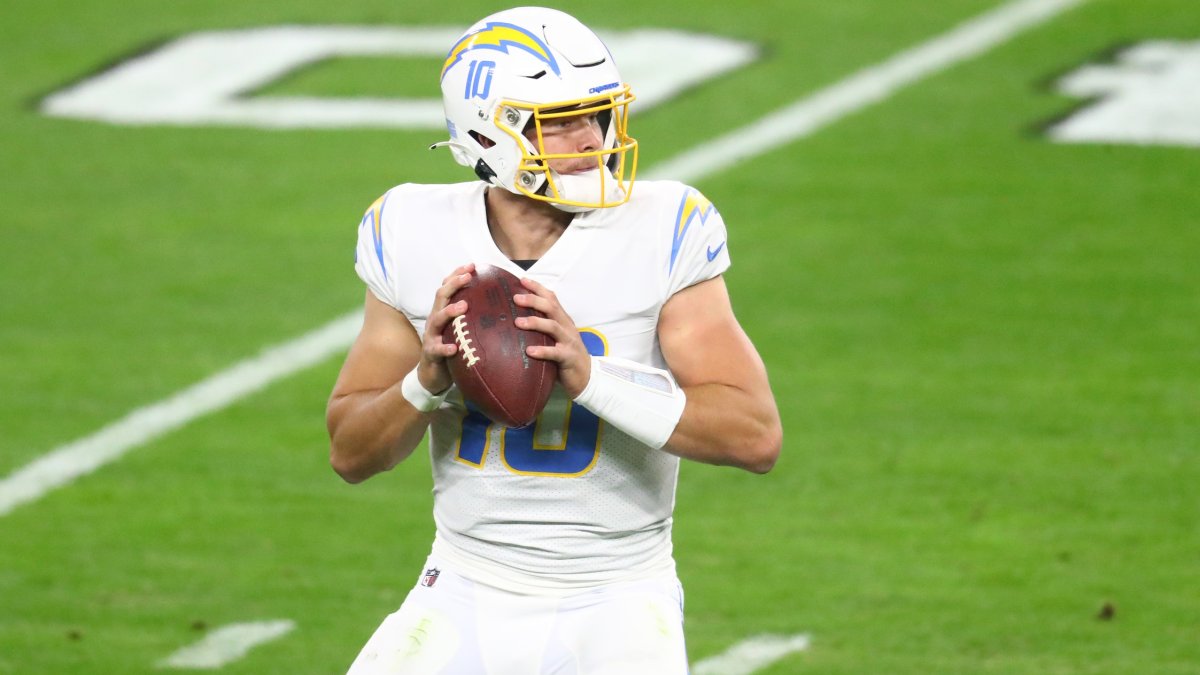


 © 2024 PFF - all rights reserved.
© 2024 PFF - all rights reserved.